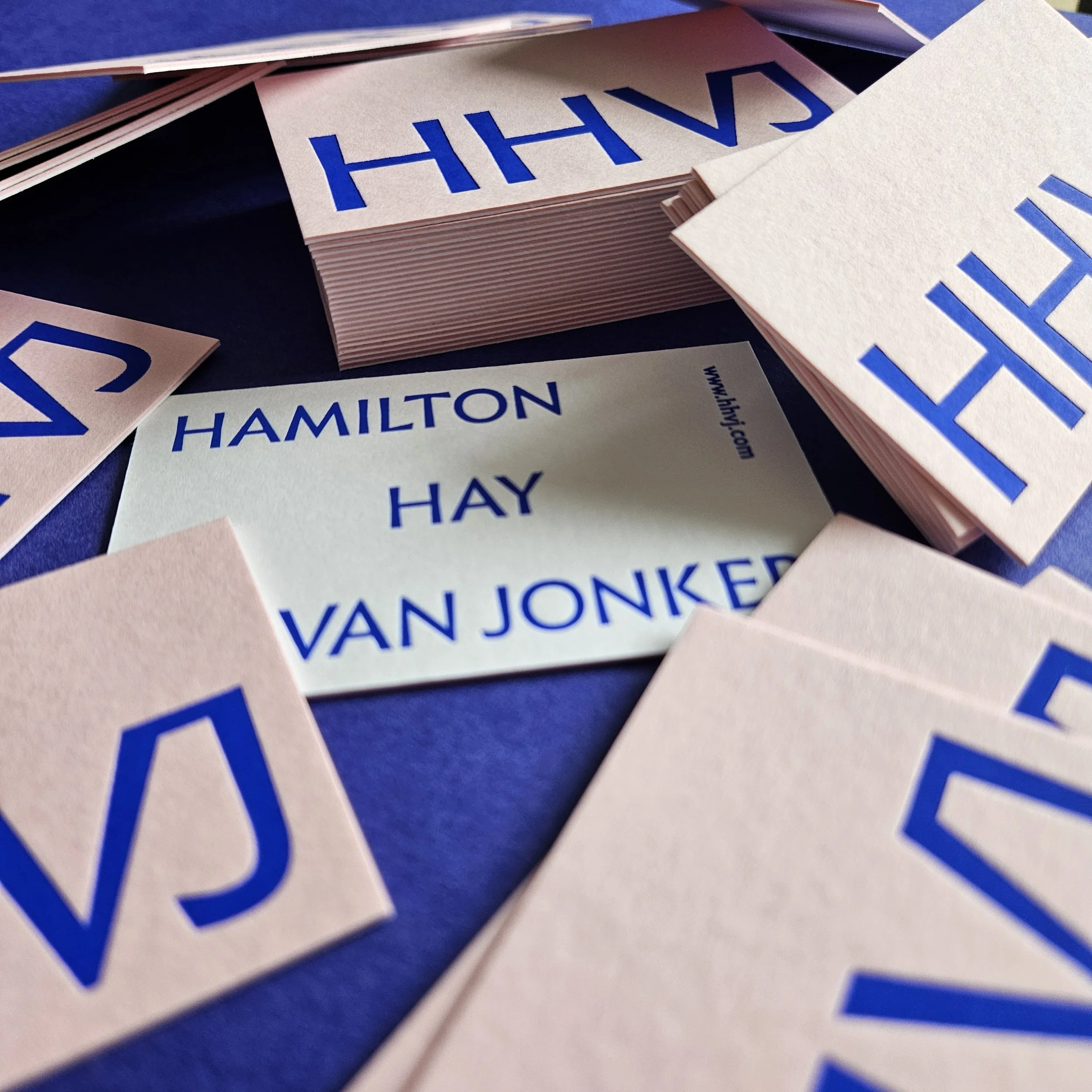The Beauty of Foil Blocking
There’s something about foil blocking that never loses its magic. It’s the shimmer on a wedding invitation, the glint on a business card, the kind of finish that makes someone stop, tilt it in the light, and ask: “how was that done?”
Here in my Glasgow workshop, foil blocking is still done the way it’s always been: by hand, using Heidelberg presses that have been running since the mid-20th century. They’re solid, reliable machines, built to last, and with the right care they produce finishes modern digital processes can’t come close to. It’s not the quickest way to work, but it is the most beautiful. And for me, that’s what matters.
What is foil blocking?
Foil blocking is the process of pressing coloured or metallic foil onto paper using heat and pressure. A metal die is heated, the foil is placed over the stock, and then with pressure the design is stamped into the sheet. Unlike ink, which sits on the surface, foil becomes part of the print itself. It catches the light, reflects colour, and leaves a crisp, tactile impression.
You’ll most often see it in classic gold or silver, but foil blocking is far more versatile than that. There are hundreds of shades available, bold colours, soft matt foils, gloss finishes, and even holographic effects. Whether you’re looking for subtle sophistication or eye-catching shine, foil blocking can do both.
Why choose foil blocking?
Impact – It makes a design memorable. Even a simple logo comes alive when it’s foiled.
Durability – Because it’s pressed in under heat, foil won’t smudge or fade.
Versatility – Works on business cards, invitations, packaging, certificates, menus, the lot.
Tactile quality – It’s not just about looks. People always run their fingers over foiled designs.
Foil blocking is often the detail that elevates a design from “nice” to “something worth keeping.”
Traditional foil printing in Glasgow
Every sheet that comes off the press has been hand-fed. Every impression is checked and adjusted until it’s just right. Every roll of foil is chosen specifically for the project. That’s the difference when you work with traditional foiling rather than automated processes.
There’s no “one size fits all” here; each project has its own quirks, its own stock, its own detail. And the only way to get it right is with patience, experience, and a steady hand.
From design to detail
Foil blocking works for all sorts of projects:
Wedding invitations – adding a shimmer of gold or silver to set the tone.
Business cards – making a logo shine and stand out in the pile.
Packaging – giving products a premium finish that catches the eye.
Custom pieces – from certificates to exhibition prints, foil brings detail to life.
Designers often tell me their work feels “finished” once it’s been foiled. I’d have to agree.
Got a project in mind? I’d love to hear about it. Get in touch, and let’s talk foil.



